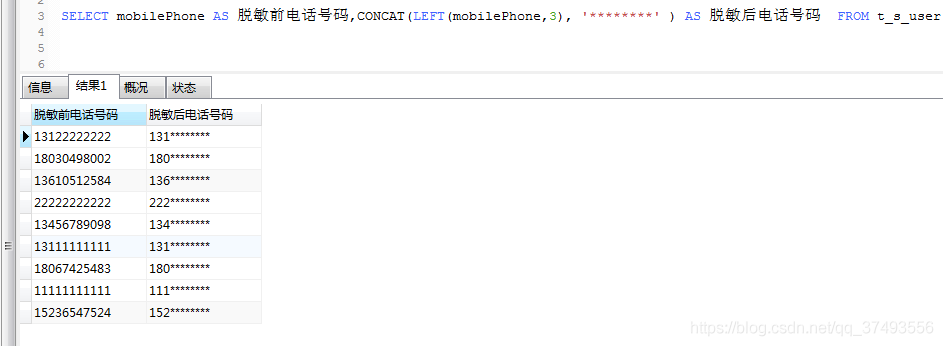MyBatis limit分頁(yè)設(shè)置的實(shí)現(xiàn)
<select parameterType='MyApplicationRequest' resultMap='myApplicationMap'> SELECT a.*, FROM tb_user a WHERE 1=1 <if test='ids != null and ids.size()!=0'> AND a.id IN <foreach collection='ids' item='id' index='index' open='(' close=')' separator=','> #{id} </foreach> </if> <if test='statusList != null and statusList.size()!=0'> AND a.status IN <foreach collection='statusList' item='status' index='index' open='(' close=')' separator=','> #{status} </foreach> </if> ORDER BY a.create_time desc LIMIT (#{pageNo}-1)*#{pageSize},#{pageSize}; // 錯(cuò)誤</select>
在MyBatis中LIMIT之后的語(yǔ)句不允許的變量不允許進(jìn)行算數(shù)運(yùn)算,會(huì)報(bào)錯(cuò)。
正確的寫法一:<select parameterType='MyApplicationRequest' resultMap='myApplicationMap'> SELECT a.*, FROM tb_user a WHERE 1=1 <if test='ids != null and ids.size()!=0'> AND a.id IN <foreach collection='ids' item='id' index='index' open='(' close=')' separator=','> #{id} </foreach> </if> <if test='statusList != null and statusList.size()!=0'> AND a.status IN <foreach collection='statusList' item='status' index='index' open='(' close=')' separator=','> #{status} </foreach> </if> ORDER BY a.create_time desc LIMIT ${(pageNo-1)*pageSize},${pageSize}; (正確)</select> 正確的寫法二:(推薦)
<select parameterType='MyApplicationRequest' resultMap='myApplicationMap'> SELECT a.*, FROM tb_user a WHERE 1=1 <if test='ids != null and ids.size()!=0'> AND a.id IN <foreach collection='ids' item='id' index='index' open='(' close=')' separator=','> #{id} </foreach> </if> <if test='statusList != null and statusList.size()!=0'> AND a.status IN <foreach collection='statusList' item='status' index='index' open='(' close=')' separator=','> #{status} </foreach> </if> ORDER BY a.create_time desc LIMIT #{offSet},#{limit}; (推薦,代碼層可控)</select>
分析:方法二的寫法,需要再請(qǐng)求參數(shù)中額外設(shè)置兩個(gè)get函數(shù),如下:
@Datapublic class QueryParameterVO { private List<String> ids; private List<Integer> statusList; // 前端傳入的頁(yè)碼 private int pageNo; // 從1開始 // 每頁(yè)的條數(shù) private int pageSize; // 數(shù)據(jù)庫(kù)的偏移 private int offSet; // 數(shù)據(jù)庫(kù)的大小限制 private int limit; // 這里重寫offSet和limit的get方法 public int getOffSet() { return (pageNo-1)*pageSize; } public int getLimit() { return pageSize; }}
到此這篇關(guān)于MyBatis limit分頁(yè)設(shè)置的實(shí)現(xiàn)的文章就介紹到這了,更多相關(guān)MyBatis limit分頁(yè)內(nèi)容請(qǐng)搜索好吧啦網(wǎng)以前的文章或繼續(xù)瀏覽下面的相關(guān)文章希望大家以后多多支持好吧啦網(wǎng)!
相關(guān)文章:
1. MYSQL(電話號(hào)碼,身份證)數(shù)據(jù)脫敏的實(shí)現(xiàn)2. sql server 2000無法打開1433端口3. 關(guān)于if exists的用法及說明4. 解決Mybatis中mapper的ID沖突問題5. 如何自行解決Oracle的技術(shù)問題?6. MyBatis Plus 入門使用詳細(xì)教程7. SQL Server 2008通過端口1433連接到主機(jī)127.0.0.1的TCP/IP連接失敗8. SQL Server根據(jù)查詢結(jié)果,生成XML文件9. sqlserver數(shù)據(jù)庫(kù)導(dǎo)入方法的詳細(xì)圖文教程10. xp sp2 + sql server 2000 developer環(huán)境開1433端口

 網(wǎng)公網(wǎng)安備
網(wǎng)公網(wǎng)安備